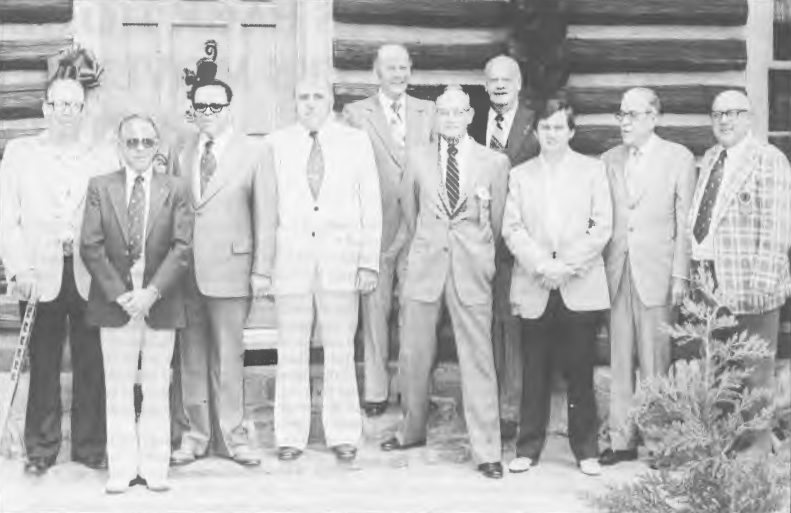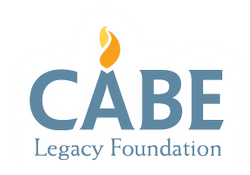The log cabin was built by the Works Progress Administration (WPA) in the early 1930s only one block from the site where HooHoo was founded in 1892.
During the 1978 annual convention in Toronto, the international board of directors, by invitation from Snark Laurn Champ L-75820, heard from Gurdon, Arkansas, Mayor Russell McClain, and longtime Gurdon Hoo-Hoo supporter Louis Cabe L-53433 to establish a Hoo-Hoo museum in the former Gurdon City Hall. The City Hall had been located in a historic yet sizable log cabin on Gurdon's Main Street and thanks to a contribution from Hoo-Hoo members Louis, Harold, and Horace Cabe, the city offices were relocated to a new municipal building. For the modest rent of one dollar per year, Hoo-Hoo was invited to establish a museum in the old cabin. The offer was graciously accepted on December 1, 1979, and the movement to raise money for the museum was quickly put into effect. No funds were provided from Hoo-Hoo International (HHI), solely donations.
The concept of the HHI and Forestry Museum grew out of a desire on the part of Hoo-Hoo leaders to establish a repository where the history of our unique order could be preserved for posterity. This concept became reality a short time later when the official museum was dedicated on Saturday, April 11, 1981, in Gurdon, Arkansas, the town of Hoo-Hoo’s birth.
Repair work included adding a new roof, new paint, refinished oak floors, and new toilet facilities. The building also received heating and air conditioning, carpeting, paneling, suspended ceiling, tables and chairs, drapes, and new light fixtures. Thanks to the Louis Cabe family of Gurdon, beautiful furniture was purchased for the foyer, and a full kitchen (complete with appliances, silverware, and dishes) was added in a back room. The repair work was finally completed, and the building was ready for its dedication ceremony on April 11, 1981, which was attended by many Hoo-Hoo dignitaries and townspeople.
By the time it was dedicated, the museum had taken on an additional purpose. It would also be home to various tools, artifacts, and photos which serve to chronicle methods of logging in years gone by.
Rameses 72 Jimmy Jones L-72703 was elected chairman of the Museum Committee in 1981. Other committee members included Laurn Champ L-75820, Louis Cabe L-53433, Dick Wilson L-51796, Bernie Barber, Jr. L-48864, Bill Russell L-50220, Russell McClain 88090, and Gary Hester 91283. Jones was later elected as Permanent Chairman of the Museum Committee by the board of directors in 1985.

The Hoo-Hoo International and Forestry Museum was officially dedicated on April 11, 1981. Among the Hoo-Hoo dignitaries attending the dedication ceremony were (left to right) Norm Mikalson 65163, Carle Hall L-57737, Rameses 72 Jim Jones L-72703, Rameses 73, Bob Van Everly L-73186, Jack Jacobson L-73133, Dick Wilson L-51796, Rameses 74 Dan Brown L-74477, Gary Hester 81283, Bill Russell L-50220, and Bernie Barber L-48864. On September 24, 1991, almost 100 years after Hoo-Hoo was founded, a young woman named Starr Mitchell from Little Rock, Arkansas, visited the museum and noted in the guest register that her grandfather, Will Starr Mitchell 56, helped found Hoo-Hoo.
In 1982, the HHI office was moved to Gurdon from Boston, and HHI and the museum shared facilities in the log cabin. The museum was located in the auditorium area of the building, which was furnished with attractive display cases built by Ted Anderson 77236 of Atlanta Hoo-Hoo Club No. 1. (Ted was also the designer and builder of the computer tables in the HHI office.) The display cases were transported to Gurdon and assembled by Rameses 76 Dick Wilson L-51796, also of Atlanta.
Tax-exempt status for the museum was granted on May 4, 1984, which made all contributions to the museum tax-deductible.
Today, an honorary plaque listing the charter members of the museum hangs in the beautifully decorated foyer of the building. Also in the foyer hangs a Memorial plaque to list the names of contributors who have made donations to the museum in memory of loved ones. The names of the deceased are also listed on the plaque. The memorial plaque was donated in 1985 by International Secretary Treasurer Bernard Barber, Jr. 48864, of San Joaquin Valley Hoo-Hoo Club No. 31.
As the Museum and operations of the international office expanded, additional space was needed. Therefore, a movement to raise additional monies for the construction of a new addition to house the Museum was launched in 1985. On March 22, 1986, more than 100 Hoo-Hoo members, guests, and wives from the United States, Canada and Australia were in Gurdon for the dedication of a new 24' X 30' log cabin building which houses the new expanded Museum. The celebration was held in conjunction with the mid-term board of directors meeting. The new building was constructed by Gurdon Hoo-Hoo member Don Stone 88358 and features a fire-resistant room that protects Hoo-Hoo magazines and other historical materials dating back to 1895.
The total cost of the building was only $17,785 and was funded entirely by contributions from Hoo-Hoo individuals, clubs, companies, and special fund-raising groups, such as W.O.P.S. (Wooden Outhouse Preservation Society), a group formed in Australia by Worrall McCarthy L-86521 in 1985 which donated $5,000 to the project.
The cost of the building would have been much higher if not for the generosity of many people, including Phil Cocks L-77298 of Central Florida Hoo-Hoo Club No. 115 and Ted Anderson 77236 of Tampa Bay Hoo-Hoo Club No. 225. Phil arranged for the donation of all doors, windows, carpet, and even the exotic woods used to build the display cases. The wood was shipped to Ted who manufactured the eight cases, furnished the glass and hardware, and trucked them from Tampa to Gurdon.
The museum addition was the brainchild of Chairman Jimmy Jones who was the main fundraiser, project coordinator, public relations director, and overseer of operations of the museum since its inception. But Jimmy was assisted by many others who were dedicated to seeing the project through to completion and continue to do so. This addition was dedicated on June 1, 1996.
At the Centennial Convention in Hot Springs, AR in 1992, Harry Merlo L-54484, President and CEO of Louisiana Pacific, donated 914 shares of LP stock, valued at $50,000. The stock went on to split that year to grow to 1828 shares and a new value of $56,439.50. The terms of the donation were that if the stock did not have a value of $100,000 in 5 years, Harry would donate additional stock to make the value to $100,000. In 1997, the value was a dismal $45,825.17, so a man of his word, Harry donated 2607 additional shares of LP stock to make the value $100,000. Over the next decade, LP stock continued to decline to a low of $1.31 per share and worth only around $6,000. It made a comeback in the early 2010s and the board sold the stock in 2016 for $80,600 and placed it in a financial management account where it has been averaging around 6% thanks to Kent Bond 89381.
In March of 1996, an addition to the museum became underway and was completed in May, Jimmy Jones L-72703, Rameses 73 took charge again and raised over $25,000 to fund this project. This addition was 26 x 30 which includes a fire-safe room where all of the valuable records are housed.
With the boom of the museum and many donations, more room was needed, so in 2008 the board solicited donations at the convention, and plans were started for the addition of a 26 X 16 storage room to house records and items that are not currently in the museum rotation. This addition also included a double door set up to the outside for loading and unloading of larger items. The addition was dedicated in memory of Seer of the House of Ancients, Ernie Wales 45412, on March 7, 2009, at a cost of just over $25,000.
The museum is rich with the history of Hoo-Hoo since 1892 and houses a minimum of one copy of every publication in the organization. Since November of 1895, artifacts from around the world in timber, memorial plaques for many of its members, tributes to many great people in the forest products industry and the city of Gurdon. Please visit the museum to explore the history of your membership.



